Two card sorts were conducted consecutively, to determine both the participants’ familiarity with technology and their concern for health. These are the two primary metrics by which our team has sorted our users, and this card sort helped to identify what was “normal” within those archetypes.
Curt and Carmen Campbell received the cards in their dining room.
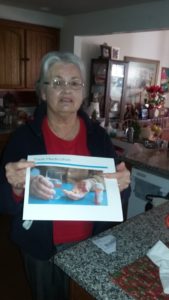
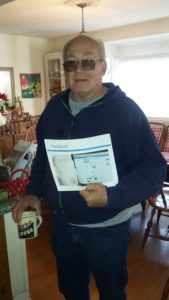
Next, they began to lay out the technology cards and sort them according to how familiar they are with the technology and how likely they would be to use it. Interestingly, Carmen laid hers out in the kitchen whereas Curt did his arranging on the dining table.
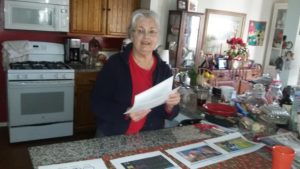
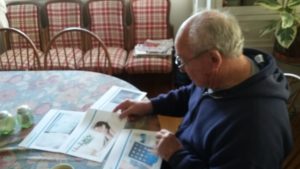
At the end of the technology sort, the results gave great insight into the archetypes of the participants. Carmen most preferred using a landline phone, with least preference towards using “FitBit” smartwear; whereas Curt most preferred the “FitBit” smartwear and least preferred using Facebook.
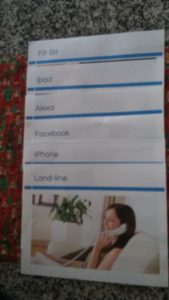
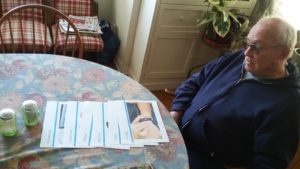
Next, Curt and Carmen sorted a deck containing health concerns which could be monitored by technology based on their priorities. In this case, Curt and Carmen had more similarity in their preferences. Carmen was most interested in tracking daily activity and exercise, while least interested in tracking her mood throughout the day. Curt found his vitals to be the most important, with his mood being the least important health concern.
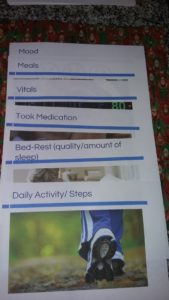
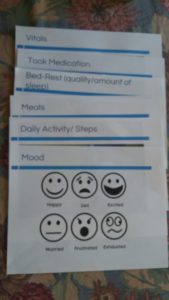
Overall, this exercise gave insight into what technologies can be leveraged to track which aspects of overall health of the elderly. A key takeaway is that each individual has different preferences, and a tailored care plan leveraging the most familiar technology with the most desired tracking results will be ideal.